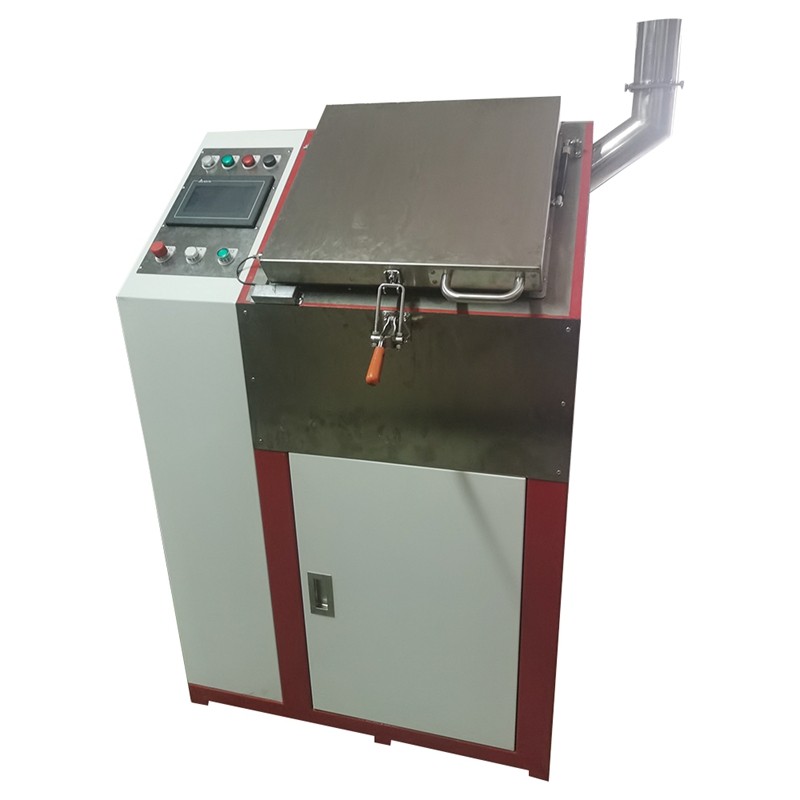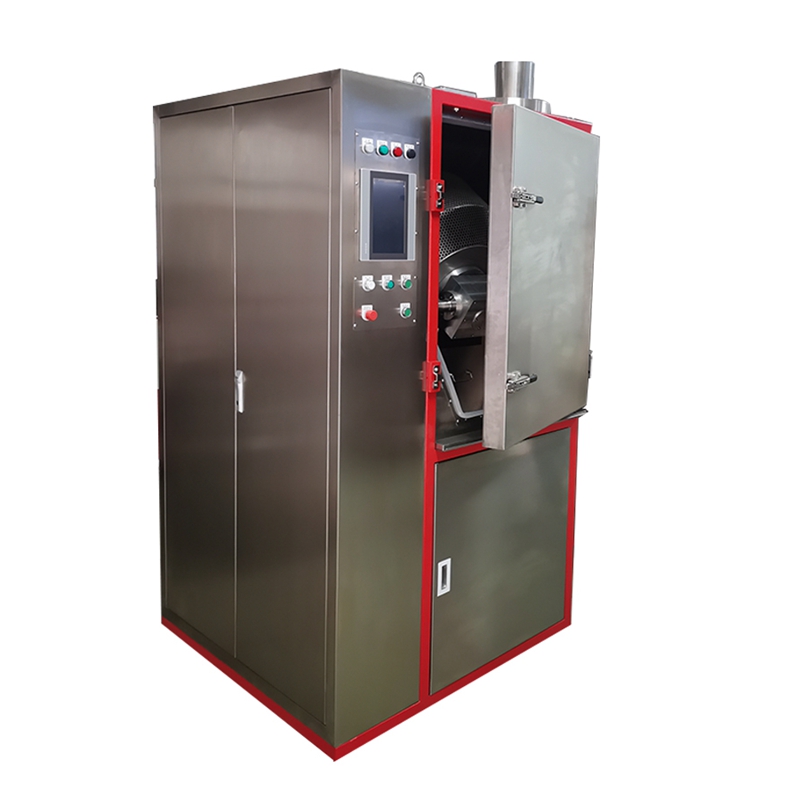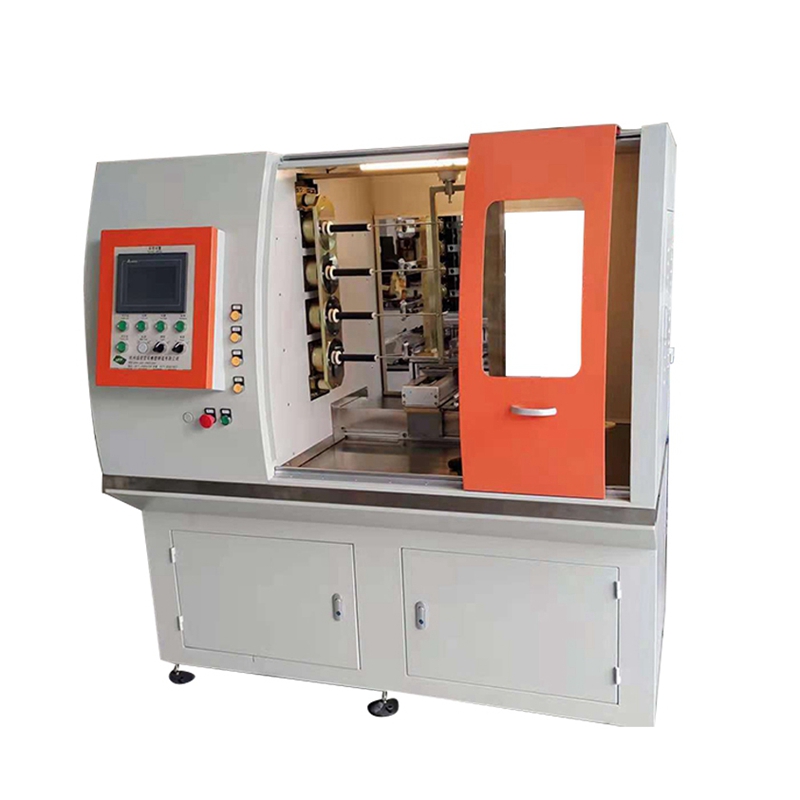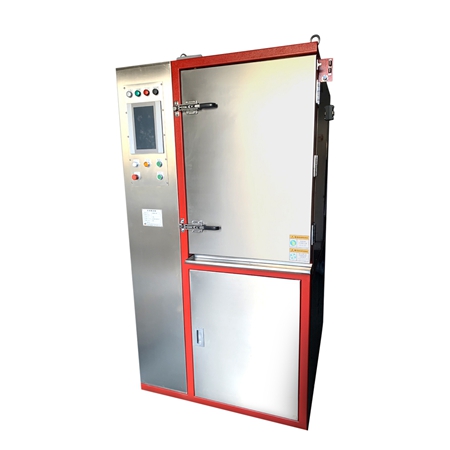Alimentador gravimétrico por pérdida de peso marca “PG” de Nanjing Pege
Jul 11, 2024
Alimentador gravimétrico por pérdida de peso marca “PEIKE” de Nanjing Pege
Introducción
Nanjing Pege Techno Machine Co., Ltd está especializada en el diseño y producción de alimentadores de bajo peso, incluidos alimentadores de pérdida de peso de tornillo simple y doble, alimentadores gravimétricos de líquido, alimentadores a microescala, alimentadores vibratorios, alimentadores de tolva PUR flexibles con masaje de paletas y ingredientes múltiples. alimentador compuesto.
Nuestros productos se aplican con éxito en diversos campos de dosificación y mezcla, como la industria química, plásticos de ingeniería, cables, procesamiento de alimentos, farmacéutica y materiales de construcción.
Nuestra empresa matriz se dedica constantemente a brindar soluciones de pesaje, alimentación, transmisión, empaque y apilado automático, para brindar productos y servicios profesionales para el cliente en todo el mundo, tanto en el campo de fabricación de productos sólidos como líquidos. Para fortalecer nuestra competencia y posición de liderazgo en el campo del pesaje gravimétrico, integramos nuestra profunda tecnología y talentos para mejorar nuestra competencia en diseño y fabricación.
PRODUCTOS
Alimentador por pérdida de peso de doble tornillo
Material de aplicación
Gránulos de resina, resina en polvo, carbonato de calcio, tiza francesa, tio2, negro de humo
Características
1. El marco de pesaje tipo voladizo garantiza un centro de gravedad más bajo (baricentro), una vibración más débil y un rendimiento antiinterferente de todo el alimentador.
2. La tolva vertical en forma de U con pared interior tipo espejo y sin recinto de esquina puede garantizar que no haya puentes de materiales.
3. El sensor de fuelle de acero inoxidable tiene la característica de solo una ligera deformación después de un uso prolongado y una alta precisión con menos deriva de señal, y es duradero para uso en entornos adversos.
4. 485 La transmisión digital de datos de pesaje tiene la característica de no atenuación y antiinterferencia durante el período de transmisión de datos.
5. La alimentación y la agitación se operan por separado, utilizando un motor de agitación independiente y la velocidad de agitación se puede ajustar según la demanda.
6. Ningún motor de agitación en la parte superior de la tolva seguramente reducirá la vibración durante la operación, entonces este diseño logrará una alta estabilidad y alta precisión.
Alimentador por pérdida de peso con bandeja vibratoria
Material de aplicación
Flack, fibra de vidrio, material cilíndrico, material de forma irregular procedente de recuperación
Características
1. El marco de pesaje tipo voladizo garantiza un centro de gravedad más bajo (baricentro), una vibración más débil y un rendimiento antiinterferente de todo el alimentador.
2. La plataforma de peso con sensores de pesaje dobles garantiza un buen grado de equilibrio y sin carga desequilibrada
3. 485 La transmisión digital de datos de pesaje tiene la característica de no atenuación y antiinterferencia durante el período de transmisión de datos.
4. La alimentación por vibración no daña el material en sí.
5. La alimentación por vibración eléctrica magnética garantiza un desgaste mínimo de la máquina y casi no se necesitan piezas de mantenimiento.
Materiales de aplicaciones
Aditivo líquido DCP silano anhídrido maleico
Características
1. El marco de pesaje tipo voladizo garantiza un centro de gravedad más bajo (baricentro), más débil
Rendimiento de vibración y antiinterferencias de todo el alimentador.
2. El sensor de fuelle de acero inoxidable tiene la característica de solo una ligera deformación después de un uso prolongado y una alta precisión con menos deriva de señal, y es duradero para uso en entornos adversos.
3. 485 La transmisión digital de datos de pesaje tiene la característica de no atenuación y antiinterferencia durante el período de transmisión de datos.
4. Se pueden seleccionar bomba de diafragma hidráulica, bomba de émbolo y bomba de engranajes.
5. Equipado con una pistola rociadora completamente aislada con amortiguación de fuelle SUS304, tiene la característica de mantener la presión estable dentro de las 48 horas.
6. A prueba de explosiones, preservación del calor mediante agua o electricidad son seleccionables.
Alimentador de tolva de PUR flexible con masaje de paletas
Material de aplicación
Partículas de resina, polvo de resina, carbonato de calcio,
Polvo de talco, polvo blanco de titanio
Negro de humo, antioxidante retardante de llama
Características
■Adecuado para material a granel de uso general, especialmente para material en polvo con humedad y baja fluidez.
■La báscula de pesaje tipo eslinga en voladizo soporta la tolva de almacenamiento, que tiene las características de reducción de vibración e interferencia antinivel. Este diseño puede proteger eficazmente la interferencia del valor sin peso del vibrador y medir el flujo del sistema con mayor precisión.
■Sin puentes gracias a la tolva de paredes rectas.
■Capacidad de alimentación suave mediante tolva flexible de paletas con agitación externa.
■Fácil de desmontar y limpiar, conveniente para el mantenimiento.
■La ausencia de contacto directo entre la unidad de agitación y el material garantiza que no se dañen los materiales.
■Mejore la fluidez del material, optimice las cargas dinámicas de los tornillos para garantizar un caudal estable y preciso.
■El rompedor de arco dentro de la máquina puede garantizar una alimentación de pesaje eficiente incluso si la tasa de humedad en los materiales alcanza el 20 %.
CARACTERÍSTICAS DEL SISTEMA DE CONTROL
1. Autoaprendizaje: El equipo puede identificar automáticamente la densidad aparente y la fluidez del material durante la preoperación, autoajustándose durante la operación y optimizando continuamente los mejores valores de P (proporción) e I (integral) para garantizar una respuesta rápida de la operación del sistema.
2. Antiinterferencia: Identifique automáticamente la intensidad y duración de la interferencia y adopte procedimientos de respaldo de emergencia para abordarla con urgencia y garantizar la estabilidad y precisión del sistema.
3. El software se desarrolla de forma independiente. Después de que el producto salga de fábrica, el programa original se grabará en la tarjeta Micro SD y se entregará a los clientes al azar. Ajuste de hardware.
4. Los principales formatos de comunicación del mercado se pueden personalizar según las necesidades del cliente, como Modbus, PPI, MPI, Profibus, Ethernet y otros formatos de comunicación, para que los clientes puedan acceder al sistema de control principal de la fábrica.
5. El transmisor de señales de pesaje es un producto personalizado con una resolución de cien milésimas. El transmisor está instalado en el marco de pesaje y se encuentra aproximadamente a un metro de distancia del sensor de pesaje. La transmisión de señal utiliza cable blindado trenzado RS485 y transmisión digital. Elimina la atenuación de la señal y las interferencias.
6. El controlador utiliza un PLC de la serie SMART de Siemens, cada báscula utiliza una CPU y cada báscula (cada CPU) está conectada en paralelo mediante Ethernet.
7. El puerto serie RS485 del controlador Siemens se comunica con el transmisor de pesaje, instala un puerto serie RS485 para comunicarse con el inversor o servocontrolador y el puerto Ethernet incorporado se comunica con la pantalla táctil o la computadora host a través del conmutador. Comunicación digital en toda la red, alta velocidad, eficiencia y estabilidad.
8. TEl sistema puede mostrar y registrar parámetros operativos y puede instalarse con sistemas informáticos de control industrial como Kingview doméstico, Siemens Wincc. Al mismo tiempo, se puede instalar una pistola de escaneo para la lectura de parámetros de códigos de barras, el registro del flujo de procesos y la trazabilidad de la calidad.
Preguntas frecuentes sobre los comederos reductores de peso Peike
1. ¿Qué tipo de materiales se pueden utilizar para la alimentación adelgazante?
Mezclas de gránulos de resina, flack, floculus, polvo y gránulos
Partículas de resina, polvo de resina, carbonato de calcio, fibras de vidrio
Polvo de talco, negro de carbón en polvo blanco de titanio, antioxidante ignífugo
Flack, fibra de vidrio, material cilíndrico, material de forma irregular procedente de recuperación
Aditivo líquido, silano DCP, anhídrido maleico
2. ¿Qué tipos de comederos se incluyen en la serie de comederos para pérdida de peso?
Nuestra gama de productos de alimentación incluye alimentador de micropérdida de peso, alimentador de un solo tornillo, alimentador de doble tornillo, alimentador de bandeja vibratoria, alimentador Hoppe de poliuretano con masaje de paletas y alimentador de pérdida de peso de líquido.
LEE MAS
 English
English français
français español
español




















 Soporta red IPv6
Soporta red IPv6